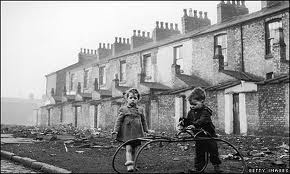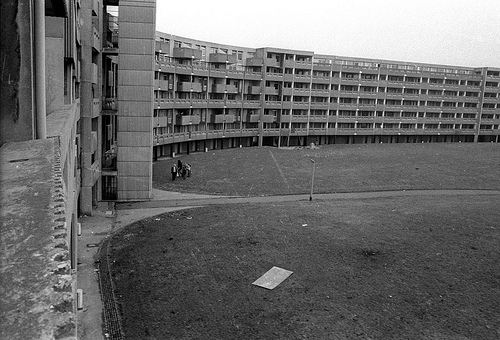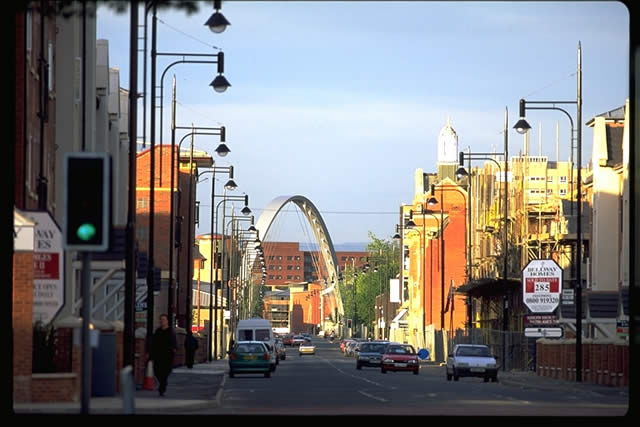Next public tour: probably autumn 2015.
Hulme, the suburb immediately south-west of the city centre, became the setting for one of the most extraordinary social engineering-cum-architectural projects Britain has ever seen in the late 20th century.
It was demolished, destroyed and rebuilt twice.
At the beginning of the 20th century the population density was around 150 people per acre, at a time when the Manchester average was only 34 per acre. The housing in Hulme was basic and brutal: two-up, two-down brick boxes with next to no sanitation, what the suffragette Sylvia Pankhurst described as: “endless rows of smoke-begrimed little houses, with never a tree or a flower in sight…how bitterly their ugliness smote me!”
It was not a land of heavy industry – there were no railways – but was dotted with small workshops such as that run by Rolls and Royce who made their first internationally famous cars here.
Unlike nearby Chorlton-on-Medlock and Ardwick, Hulme never had a resident middle-class community – there were no desirable squares or attractive villas – and so in 1934 Manchester Corporation chose it for slum clearance, the largest such site in Britain at over 300 acres.
The housing stock was mostly sound, but what gave the area its depressing veneer were the social conditions all around; that few of the properties had a tap or sink, which were mostly found in the yard at the back, and that drainage was poor.
A sensible and cheaper solution than total demolition would have been installing inside taps, sinks and improved drainage, repointing the walls, securing the roofs and adding doors, but these ideas were discounted. So Hulme came down and up went concrete crescents that became the most notorious housing estate in the city’s history – perhaps even in British history, pace the Gorbals – a template for every half-realised, under-financed, ill-conceived, town hall project.
When that failed it was knocked down again, in the 1990s, and rebuilt in a more logical and socially acceptable format, leading people to wonder why they didn’t just leave it alone in the first place.



